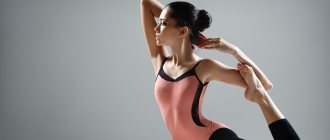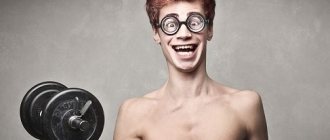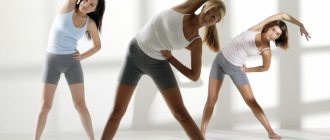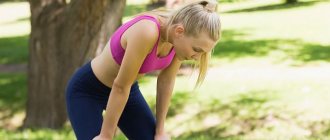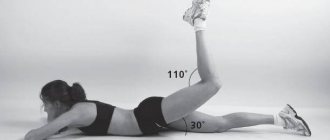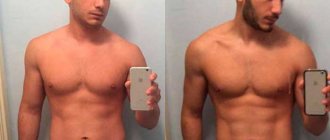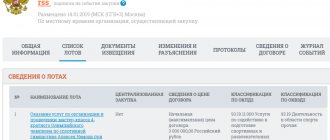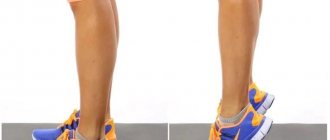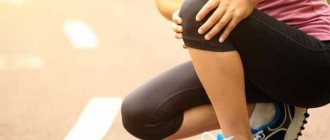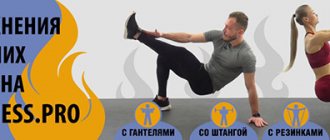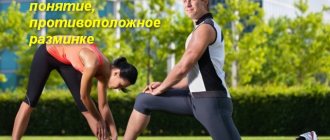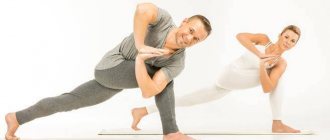How to relax tight thigh and quadriceps muscles? Five exercises
The hamstrings and quadriceps are some of the most difficult muscles to deal with post-workout pain.
Most athletes involved in strength sports agree that these two muscle zones most often cause soreness, and the pain may not go away within a week. The reason for this is the low elasticity of these muscles, leading to their tightness. We decided to help those who suffer from pain caused by tightness in the hamstrings and quadriceps muscles by talking about 5 life-saving exercises.
A few more stretching exercises.
I also include very simple stretching exercises in my stretching training, but nevertheless, I suggest you look at them as well. These are 5 more exercises from a series of 30 exercises for stretching the leg muscles. I will leave them without description, I hope you will understand how they are performed. They also stretch the leg muscles: hamstrings, inner thighs, calf muscles.
Stretching is a training technique that allows you to make your muscles more elastic and your body more flexible. The literal translation of the word “stretching” is stretching.
But the technique received its English name due to the fact that it is practiced separately from fitness and athleticism, with the goal of improving the body’s health and making it more flexible. Stretching is especially popular among middle-aged and elderly people.
According to statistics, people who started doing fitness and stretching after the age of 35 look better by the age of 70 and have a higher level of flexibility than “passive” individuals.
Double twist
The exercise is performed standing and is aimed at relaxing and relieving pain in the back of the thigh.
.
A) You need to stand straight and then lean forward. The knees remain straight.
B) Stretch towards the floor at the toes of your feet, then move towards your knees.
Advice:
Be sure to keep your knees straight and your quadriceps tense.
What kind of stretching is there?
Static exercises - when you make an effort and, for example, clasp your own feet with clasped hands in a sitting position, folding in half. This is the so-called “fold”.
Dynamic stretching is the same exercise performed with amplitude: you bend rhythmically, each time bending your chest lower and lower towards your knees.
Static-passive stretching is an exercise in which the “stretched” state is maintained not by muscle effort, but by the weight of your own body. A classic example is when we do the splits, longitudinal and transverse.
The most effective is paired stretching, when two people participate in the exercises: a partner or trainer helps to stretch. When a person works alone, it is more difficult for him to relax his muscles. And under the influence of a partner, you can relax as much as possible and achieve better results in a shorter time. True, pair work requires special caution. The partner's influence should increase very gradually. The movements are smooth and soft to avoid injury. And it is better to perform such exercises under the supervision of a trainer.
Stretching the muscles of the hamstrings: standing
The exercise is aimed at relieving pain in the buttocks and back of the thighs
A) Place your foot on a bench or any other elevated surface
B) By tilting your body towards the foot of the leg located on the bench, reach for it.
C) Hold this position for 15-20 seconds, and then change your leg to the other.
Advice:
choose the right elevation - it should not be too high. Keep your knee straight, and you can move your pelvis slightly forward - this will enhance the effect of the stretch.
Anatomy of the anterior thigh
The muscles of this part allow you to bend your knees, tilt your pelvis forward, bend your hips, and the posterior muscles help you straighten.
Thigh muscles
On the front of the thigh is the most powerful muscle of the legs - the quadriceps or quadriceps muscle - so named due to the heads of the muscle, which begin from the femur and end in the tibia, forming a common tendon. An exception is the rectus muscle, which descends from the ilium and attaches to the acetabulum. The quadriceps helps the knee joint to fully extend.
The structure of the quadriceps includes muscles:
- The rectus muscle turns out to be the longest of the other four heads of the anterior leg muscle. It is located from the acetabulum and ends near the tibial tubercle. Non-flexion of the knee has the least impact.
- The vastus lateralis is the largest muscle in this part of the thigh. The shape is flat, wide and thick. Descends from the trochanter of the femur, weaving itself to the bottom of the tendon of the rectus leg muscle.
- Medial wide - shaped like a drop located inside, originating from the linea aspera and moving to the patellar ligament.
- Intermediate wide - lies between the medial and lateral, is located deeper than the others, and is recognized as weaker than the others.
Physical exercise requires following certain guidelines for its implementation. Stretching the thigh muscles is no exception. This set of exercises is called stretching. This type of aerobics is an effective way to stretch muscles and improve a person’s general physical condition.
To obtain the desired results, training must be carried out systematically. These physical exercises are popular among fitness enthusiasts as they do not require special preparation. Stretching is used to correct body shape, prevent and treat diseases of the legs and back.
Immediately before stretching the muscles, be sure to warm up and warm up. This will prepare the connections for later exercises.
A good way to warm up is to jump in place or run at a normal pace with hopping and swinging movements. You need to remember about breathing: you cannot hold it.
We suggest you familiarize yourself with How to show your back muscles
Stretching the leg muscles allows you to qualitatively prepare the body for physical activity and competitions. Regardless of age and training experience, stretching is a necessary part of artistic gymnastics. In order for the exercises to bring the desired results, a training program is drawn up, which provides a calendar of gym visits, stretches of various leg muscle groups and diet are described.
The benefits of training are obvious: the body develops resistance to stress, weight and cardiovascular system are normalized, legs take a beautiful shape and become stronger.
Any stretching of the rear and anterior muscles requires compliance with the rules, first of all, so as not to damage your health, and secondly, so that the achieved result is maintained for a long time.
Muscle stretching
Classes are conducted systematically. The number of classes should not decrease.
You will need to learn how to properly relax your leg muscles, otherwise you may end up with chronic fatigue syndrome.
Before stretching the thigh muscles, it is recommended to warm up, otherwise you may end up with an injury. Exercises that are often suggested as stretching include rotation of the pelvis and ankle joint of the legs.
Consider going for a run as a great way to exercise. You need to run at a normal pace, jumping from foot to foot with swinging movements. You can warm up by jumping in place, on one leg or both.
Warming up the leg muscles before stretching will prepare the ligaments for the exercise.
The minimum time spent in a stretching pose is 10 seconds, gradually increase to 60. Stretching for less time will not give results.
To achieve success when stretching, you need to breathe deeply. You can't hold your breath!
Remember, muscle stretching is not supposed to be painful. Some discomfort is acceptable, especially in the initial stages, but not pain.
To harmoniously stretch your thigh muscles, it is recommended to create a muscle stretching program.
Good muscle stretching is the result of many years of work on the body. You will need to have a considerable amount of patience to engage in this type of activity.
The benefits of exercise are obvious: the effects of stress are prevented, weight is normalized, the cardiovascular system begins to function normally, and the body’s overall resistance is developed.
Training is gradually becoming a part of life. Stimulate your own interest by doing family or group activities.
Stretching the quadriceps and hip flexors
The exercise is performed while standing on your knees.
A) Lowering yourself to the floor, place one leg in front of you, while bending it at the knee joint. Position the other leg so that its knee rests on the floor.
B) Now lift the leg lying behind you, taking it by the ankle, and pull it towards the buttock.
C) As soon as you feel that there is a stretch in the front surface of the thigh, stay in this position for 20-30 seconds. Then switch legs and repeat it all again.
Advice:
pull your leg towards the buttock slowly, avoiding sudden pain
A quick and effective stretching program
We all know how good stretching is and how great it makes us feel! That's why I created a set of exercises for quick and effective stretching that you can use whether you are a beginner or an experienced athlete. The other fantastic part is that you can do it anywhere, anytime! Remember to warm up first and never stretch until it hurts.
Hold each stretch on the list for 15-30 seconds, repeating 2-3 times depending on how you feel.
Neck stretch
Stand or sit with your shoulders tense and your back straight. Tilt the left side of your head towards your left shoulder and hold. Rotate your head down toward the floor and bring your chin toward your chest. Hold and finally turn your head to the right and tilt the right side of your head towards your right shoulder. Inhale and exhale slowly and in a controlled manner.
Biceps femoris stretch
Stand with your back straight, abdominal muscles tense, shoulders down and feet shoulder-width apart. Extend your left leg forward, heel down, toes up, and leg straight. Keeping your back straight and your abdominal muscles tight, bend your right knee as if sitting back while keeping your hands on your hips. Switch legs and repeat.
Quadriceps stretch
Stand straight, holding onto a chair or wall with one hand for balance if necessary. The back is straight, feet shoulder-width apart. Turn back and grab the foot of your left leg with your left hand, bending your knee and keeping your thighs close to each other without moving your left hip back. Switch sides and repeat.
Stretching the pectoral muscles and biceps
Stand up straight or sit up straight. Pull your arms back, clasp your arms and straighten them. Keeping your arms straight at your elbows, lift them up, keeping your back straight and your shoulders down. Your shoulders should be relaxed and away from your ears.
Triceps stretch
See also: How to Get Inspiring Glutes
Stand up straight or sit up straight. Place your left elbow in your right hand. Reach your left arm behind your head, placing your palm on the center of your back and holding your elbow in your right hand. Reach your fingertips towards your spine. Keep your shoulders relaxed. Switch sides and repeat.
Back muscle stretching
Stand with your arms raised, shoulder-width apart, feet shoulder-width apart, abs tense, back straight (spine in a neutral position). Work your abs as if you were pulling them toward your spine and around your back toward the ceiling. Allow your head and neck to fall forward in a natural position between your arms.
Stretching the pelvis and gluteal muscles
Lie on your back, legs extended, back straight. Press your hips and lower back toward the floor. Bend your left knee, placing your foot flat on the floor. Place your right ankle on your left knee. Place your palms on the back of your left thigh and bring your legs toward your chest. Place your right elbow on the inside of your right knee and push it slightly to the side. Switch sides and repeat.
This set of stretching exercises is what I always do! I've found that this is really effective when I'm traveling and don't have time to get to the gym, or when I'm stuck at the airport. So no matter where you are, or what you do, you now have an effective program that you can do anywhere!
Author: Ingrid Romero Original article posted on www.ingridromero.com
Standing quadriceps stretch
A) Standing up straight, grab your foot.
B) Then, bending your knee, pull your heel towards your buttock.
Advice
: If you can't balance, hold on to a wall/chair. When performing the exercise, make sure that your knee points to the floor and your leg does not deviate to the side.
The main thing in performing the above exercises is the smoothness of their execution. Repeat each 3 to 5 times, this is guaranteed to help relax the muscles and ligaments. Trust your feelings - as soon as you feel that the muscles are stretched enough, stop to avoid the effect of overstretching.
Foot stretching exercises
Working on the interosseous and plantar muscle tissues helps develop the skeletal muscles of the foot and increase its instep.
The effectiveness of training depends on the frequency of training and the correct distribution of load on the distal limbs. Before performing strength exercises, stretch and warm up the muscles. This way you can prevent injury to your limbs during training. During classes, it is recommended to use an elastic band:
- Sit on the floor and straighten your legs in front of you.
- Place some tape over your toes and top of your foot.
- Without sudden movements, pull the ends of the ribbon towards you, feeling how the calf muscles are stretched.
- Now pull your heels towards you, trying to push the tape out with your fingers.
Pull up your toes
To make your muscles stretch, you can do the following exercise:
- Sit on the floor and straighten your legs in front of you.
- Bend your knees slightly.
- Extend your toes and foot away from you (point position).
- Try to pull your toes towards you as much as possible so that your heels go forward (flex position).
To achieve good results, the exercise to increase the height of the arch of the foot is performed at least 20 times in one approach.
With a low arch, the risk of injury increases due to excessive loads on the muscle-bone structures of the sole. To strengthen the muscles and increase the arch, it is recommended to do half-toe raises (Relevé).
To maintain balance, you can lean on the back of a chair while performing the exercise. Its essence is to lift the middle part of the foot off the floor so that the tips of the toes remain in place.
Adapted plie
In body ballet and classical dance classes, special attention is paid to training the foot and increasing its elevation. In order to strengthen the arch, an adapted plie is performed: . In a standing position, the feet should be spread out to the sides as much as possible. The toes should be extended as much as possible, and the leg muscles should be tense.
- In a standing position, the feet are spread as far apart as possible.
- The toes should be stretched out as much as possible and the leg muscles should be tense.
No less effective in developing the foot and lifting the arch will be the grand plie, during which the feet are turned in a straight line, and the arms, bent at the elbows, are located slightly anteriorly at the waist. In this position, perform a deep squat and at the same time raise your arms above your head.
Grand plie is dangerous when there is hypermobility of the joints and inflammation of intra-articular structures.
Stretching
How to stretch the instep of the foot? You can use radiators low to the floor, a sofa or a bed under which you can put your toes. To stretch the muscles on the back of the foot to the maximum, you can place a board or book under the heel. It is desirable that the raised heel does not become numb, so the height of the placed object should not exceed 5-7 cm.
Battment tendu
This is another ballet exercise that can be used to increase the arch of the foot and strengthen the muscle tissue of the plantar part. Batman tandu is performed like this:
- In a standing position, the soles rotate so that the toes of one foot touch the heel of the other.
- The front leg should slide back and forth, left and right, returning to the starting point.
- During the sliding process, the toe should not come off the floor surface.
You can increase the effectiveness of the session if you conduct the workout after a foot bath.
What stretching can do
Typically, people stretch for the following reasons: - development of flexibility; — stretching as a continuation of warm-up and reduction of injuries; — getting rid of muscle soreness; - increased muscle elasticity; - increasing strength, muscle hypertrophy and performance; - good health; - as physiotherapy and for medicinal purposes.
And all this can be obtained by stretching, which can be performed independently or in combination with other workouts, including weight loss for women or men. But stretching is different from stretching. And that's why.
Muscle stretching for splits
The exercises that include training the body to do the splits are quite varied.
Swing your legs
This action helps stretch the ligaments. You can choose a position: on your side, lying on a smooth surface or standing. Lying down, pull your leg up and hold for 20 seconds. There are two options available - lying directly on your side or on the bend of your elbow. The swings are repeated 25 times, then you need to change position. Standing - swings are made forward, backward, and also to the side. It is recommended to do more than one approach 25 times.
Swing your legs
Rotations of the head, arms and legs
This technique is also applicable for stretching the splits, helps develop ligaments, helps strengthen the muscles of the lower half of the body, warms up and tones the body as a whole. Head turns relax, do them while sitting or standing. The head drops down, circular unsharp movements are made for half a minute on one side.
Leg rotations are performed while standing. The leg is slightly raised, from this position rotations are made to the right, then to the left. It turns out - 3 sets of 25 seconds. It is allowed to do them while sitting. Then you need to straighten your spine, put your hands behind your back and place your palms flat on the floor. The movements are the same, but the leg rises higher. The lying position is also acceptable - both legs are straightened. Each side is developed for 40-60 seconds.
Foot rotations are best performed while standing, with your toes extended as much as possible. Then there are circular movements, changing sides.
Arm rotations provide an effective warm-up for the entire body. To perform this, you need to stand with your legs together and your hands in front of you. This is followed by a set of movements: arms up, arms spread to the sides parallel to the floor, arms down. Then repeat everything from the starting position. Repeat at least 20 times and no more than 30. Then you need to spread your arms and perform rotation movements with them for about 1 minute.
Tilts
An important part of the exercises, because they allow you to well prepare all the muscles of the body, with an emphasis on the back and legs. They are done sitting and standing, but to effectively do the split stretch, choose a standing position. This will stretch the hamstring ligaments.
When bending, it is required that a distance of one meter be maintained between the legs. It is permissible to clasp your hands together, then place your feet at a distance slightly greater than shoulder width. The back is always straight. The clasped hands are moved behind the back, the bends must be done very low. The arms do not separate and tend to line up with the legs. Repeat the movement 15 times.
Bend while sitting
Bend while standing
You can diversify the activity by raising your folded hands up. When bending, place your arms parallel to the floor. Hold the position for 25 seconds.
Bends to the legs can also be done while standing or sitting. Do not forget about a straight back and straightened legs in order to perform the stretch for the splits correctly. This exercise is static, hold the pose for 25 seconds. A signal that everything is being done correctly will be the feeling of the muscles working on the back and in the knee area.
Bends down and back are also very effective. Leave your legs slightly wider than your shoulders, and tilt your body forward, trying to place your palms on the floor. Repeat a number of times. Bends to the leg - in a sitting position, with your legs stretched out in front of you, you need to bend over with your arms raised above your head, trying to grab your foot. Hold the pose for 35 seconds. Then return to the original position. Repeat the exercise 25 times, it is recommended to bend the right leg.
Thigh stretch
Dynamic stretching of the thigh surface will significantly increase flexibility, thereby allowing you to do the splits in a shorter time. The initial pose is a lunge with the left knee bent strictly at a right angle in front. The right knee is on the floor. The left hand brings the foot closer to the buttocks, lowering the middle of the body as low as possible. The right hand should feel support on the floor, move the weight forward.
Power stretching from a standing position
To perform, you need to stand straight with your legs closed together. Bend the right one and use your hands to connect it to the body. The movements should be smooth, you should strive to raise your leg higher. This exercise is performed using the arms, but is more effective than body pressure stretching.
Exercise "fold"
This exercise allows you to properly stretch the muscles in your back and buttocks, and also works your abs. You need to lie on your back with your arms pointing forward. The arms and legs rise at the same time, as if closing, forming a fold in the middle of the body. It is permissible to bend your knees slightly, your fingers should touch your feet. The abs should be tense, not the back. Hold the pose for 15 seconds, then return to the starting position. Repeat 10-15 times. From the outside, the exercise looks like double crunches.
The most important thing in training split stretches is to be careful and not rush into results. The time it takes to achieve results depends on the preparation of each individual person.
Who is stretching suitable for?
Not everyone needs stretching. If you do stretching at home (without a trainer) and want to maintain your health, test yourself first for joint hypermobility. What it is, what the dangers are when stretching and how to test yourself, you can find out on your own.
It is better for those who have injuries to stretch carefully. And in all other cases you can stretch.
When to stretch?
It is best to stretch after training, but you can also do it after a thorough warm-up and a good warm-up. By the way, for this you don’t have to do exercises or hit the treadmill/exercise bike, but just take a warm bath or apply heat to the place that you will stretch. That heat helps prevent injury and improve stretching of muscles and tendons is shown in a 2001 study, “Effect of Superficial Heat, Deep Heat and Active Exercise Warm-up on the Extensibility of the Plantar Flexors.”
Those. It’s better to stretch after: - any type of training; - warm bath.
If the question is about the time of day, then stretching before bed reduces nocturnal (myoclonic) cramps and leads to relaxation of the nervous system (i.e., you will sleep more soundly).
